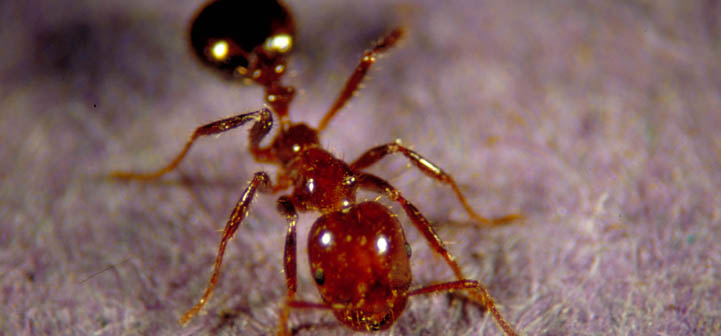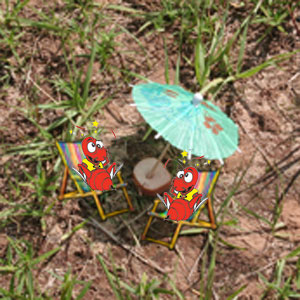FA Youth Home > Lessons: A Fire Ant Smorgasbord
Fire ants feed on insects and other arthropods as well as small birds, small mammals, amphibians and reptiles. These food sources satisfy the protein requirements in the colony so the queens can produce eggs and the brood can develop.
Fire ants also collect and feed on oily seeds such as walnuts, peanuts and sunflowers. These seeds help fulfill the colony’s requirements for fat and protein.
In addition, fire ants eat the honeydew produced by leaf-sucking insects such as aphids, mealybugs and scale insects. Honeydew is composed of sugars and water; it is the by-product of undigested plant sap that is excreted by the insects. It provides a source of quick energy for all members of the ant colony.
Fire ants have also been known to feed on seed pods, tubers (roots) and fruits. But they tend to avoid foods that contain chocolate, molasses, citrus or other aromatic oils. It is thought that these foods contain substances that are unattractive or possibly toxic to the ants.
Because fire ants eat all these different kinds of foods, they are called omnivorous. Fire ants must have a constant source of water. If necessary, they will dig tunnels down to the water table to bring water to the colony.
Fire ants also need plenty of moisture in the soil so it stays relatively cool in summer and allows the mound to hold together.
Fire ants tend to look for protein-rich foods throughout the year, but especially in spring and early fall. During hot, dry summers or cold winters fire ants seek out sources of sugars for energy. The colony will also reduce the production of eggs and offspring to conserve energy during these stressful times.

A palette for the palate of a fire ant.
Click on image to enlarge.
How do fire ants eat (and drink)?
Red imported fire ants consume just liquids. Worker ants pass liquid food from one to another as well as feeding the larvae and queens by mouth. This process is called trophallaxis. Trophallaxis continues until all the food is shared throughout the entire colony.
Adult ants cannot digest solid food so they must eat fluids. Only the last larval development stage (fourth instar) can eat solid food because only larvae can digest solid food. They do this by having the solid food placed on a their “stomach” by worker ants. Then they regurgitate on the solid food to dissolve or digest it externally. The nurse ants feed the resulting liquid to the queen. Other adult ants eat the liquid that’s left over after the queen is fed. Thus, food flows from foraging workers to nurse ant workers to larvae and then back to nurse ants before reaching the queen and winged reproductive ants.
Related Videos
- Alex Wild’s Music Video of Trophallaxis
- Fire Ants Feeding Each Other , Lekhnath Kafle, Ph.D., National Taiwan University, Taipei, Taiwan


